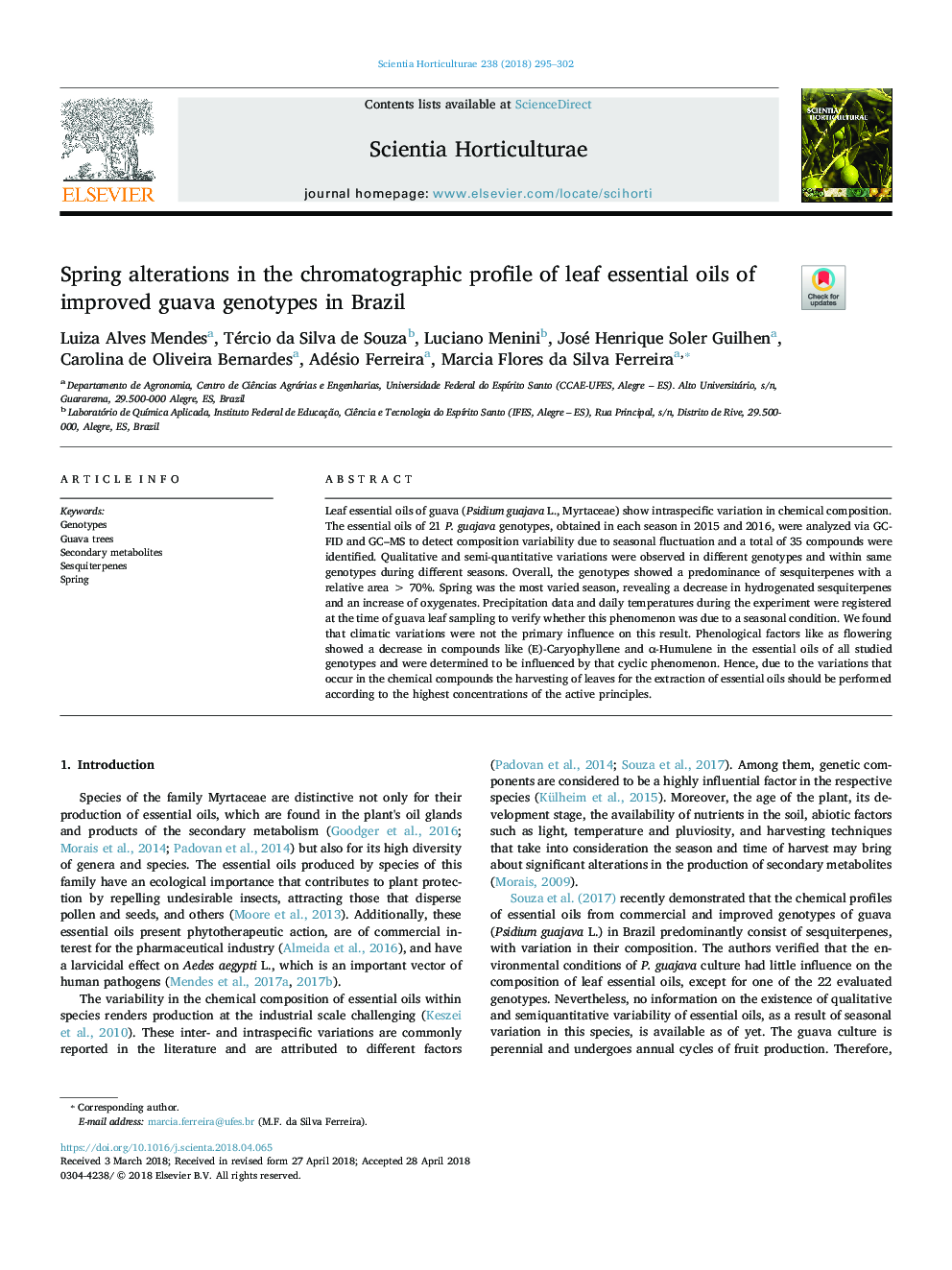| Article ID | Journal | Published Year | Pages | File Type |
|---|---|---|---|---|
| 8892520 | Scientia Horticulturae | 2018 | 8 Pages |
Abstract
Leaf essential oils of guava (Psidium guajava L., Myrtaceae) show intraspecific variation in chemical composition. The essential oils of 21 P. guajava genotypes, obtained in each season in 2015 and 2016, were analyzed via GC-FID and GC-MS to detect composition variability due to seasonal fluctuation and a total of 35 compounds were identified. Qualitative and semi-quantitative variations were observed in different genotypes and within same genotypes during different seasons. Overall, the genotypes showed a predominance of sesquiterpenes with a relative areaâ¯>â¯70%. Spring was the most varied season, revealing a decrease in hydrogenated sesquiterpenes and an increase of oxygenates. Precipitation data and daily temperatures during the experiment were registered at the time of guava leaf sampling to verify whether this phenomenon was due to a seasonal condition. We found that climatic variations were not the primary influence on this result. Phenological factors like as flowering showed a decrease in compounds like (E)-Caryophyllene and α-Humulene in the essential oils of all studied genotypes and were determined to be influenced by that cyclic phenomenon. Hence, due to the variations that occur in the chemical compounds the harvesting of leaves for the extraction of essential oils should be performed according to the highest concentrations of the active principles.
Related Topics
Life Sciences
Agricultural and Biological Sciences
Horticulture
Authors
Luiza Alves Mendes, Tércio da Silva de Souza, Luciano Menini, José Henrique Soler Guilhen, Carolina de Oliveira Bernardes, Adésio Ferreira, Marcia Flores da Silva Ferreira,
